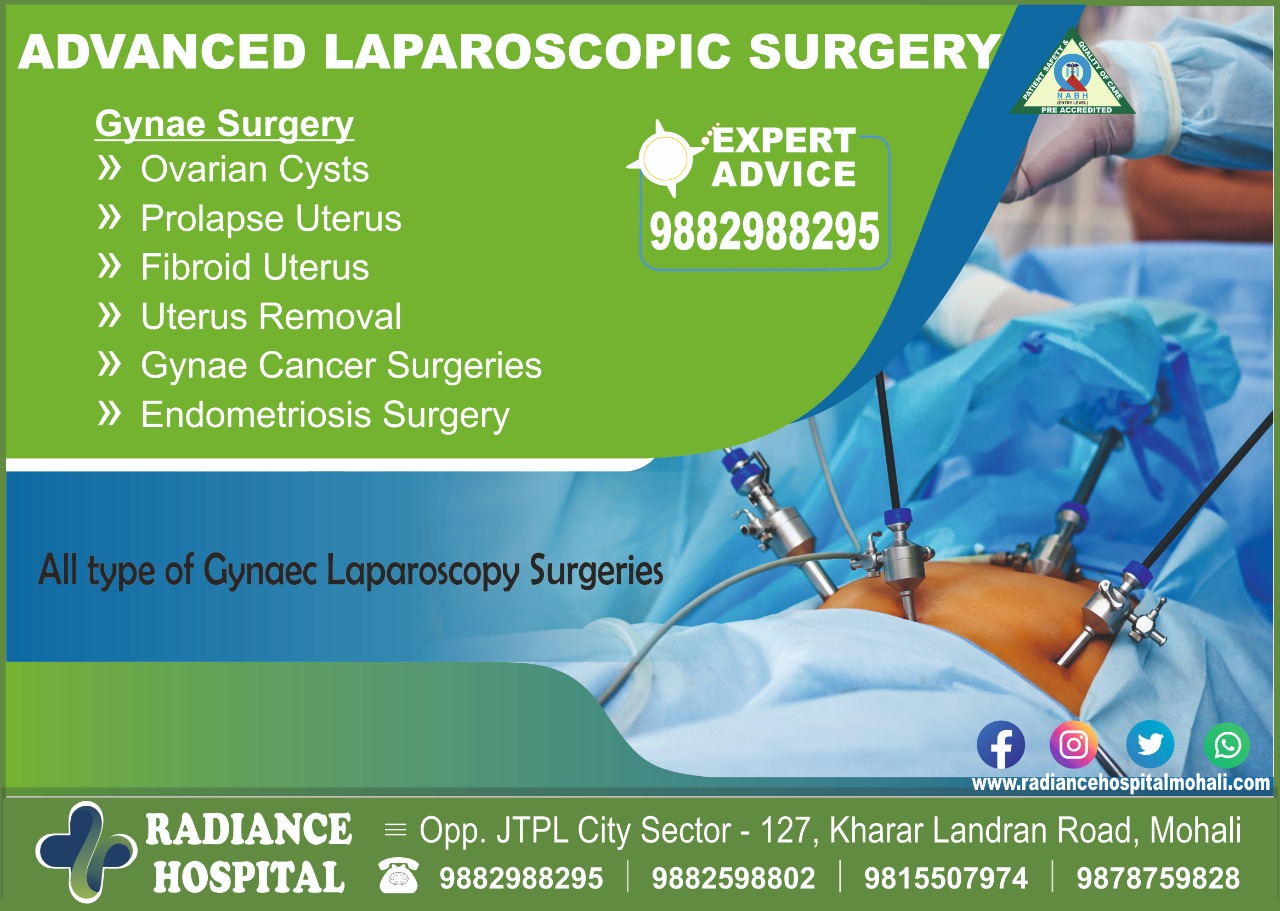In Punjab Mohali, laparoscopic Surgeon Dr. Raman Singla specializes in minimally invasive gynecological surgery such as laparoscopy, which is used to identify abnormalities, diagnose disease, and treat certain conditions. In women, laparoscopy is commonly used to diagnose the following conditions:
Chronic pelvic pain and pelvic floor disorders
Endometriosis
Ovarian cysts
Ectopic pregnancy
Gynecologic cancer
Infertility
Laparoscopy is a method of doing surgery without making a large incision. The laparoscope consists of a thin, lighted tube with a small camera that is inserted into the abdomen through a small incision.
Laparoscopy often can be performed as an outpatient procedure, and most patients recover within days.
If a problem needs to be fixed, other instruments are used, inserted either through the laparoscope or through other small incisions in your abdomen.
Types of laparoscopic surgery include:
- Myomectomy (removal of uterine fibroids)
- Hysterectomy (removal of uterus)
- Endometrial ablation (destruction of uterine lining)
- Oophorectomy (removal of ovaries)
- Cystectomy (removal of ovarian cyst)
- Repair of pelvic organ prolapse
- Reversal of tubal ligation
Benefits of Laparoscopic Surgery vs. Traditional Open Surgery
Traditional open abdominal surgeries are much more invasive than laparoscopic surgery. They entail larger incisions, more blood loss, longer hospital stays, greater risk for infection, and a longer recovery period. The benefits of minimally invasive laparoscopic surgery include:
- Smaller incisions mean less scarring and faster healing time
- Less pain
- Faster recovery time
- Less risk of infection
- Less blood loss
- Sometimes done in an outpatient setting, so you won’t have to spend the night in the hospital
If you need surgery for a gynecological condition, Dr. Raman Singla(Director Radiance Hospital) will let you know if laparoscopy is right for you.
